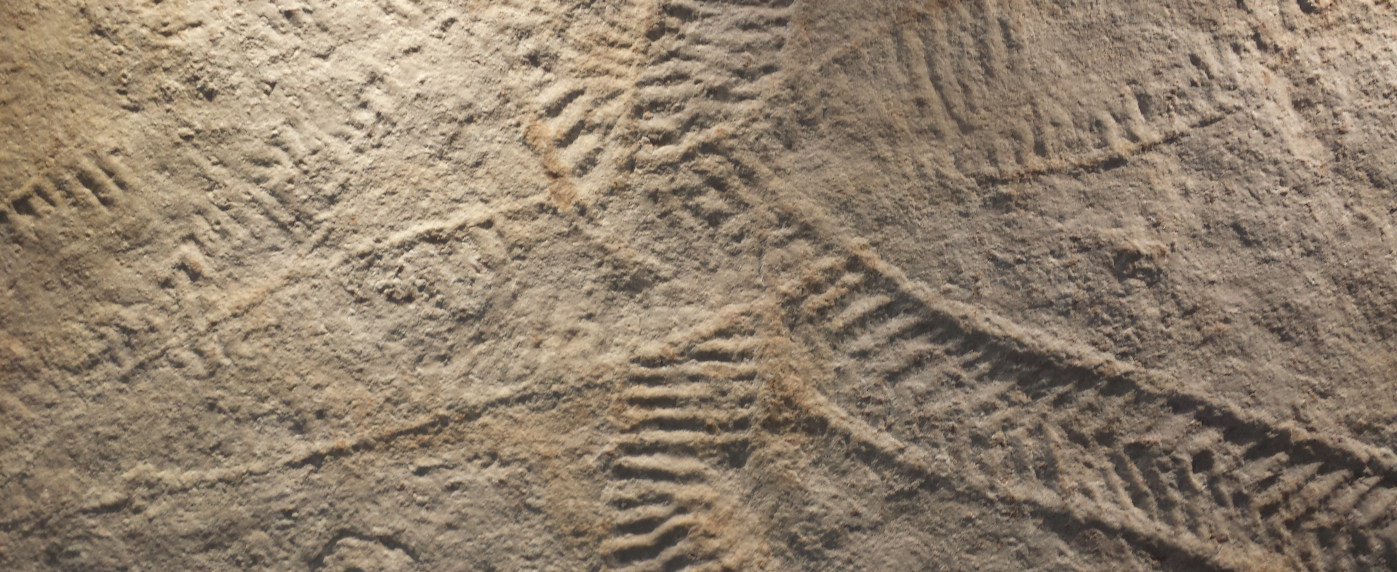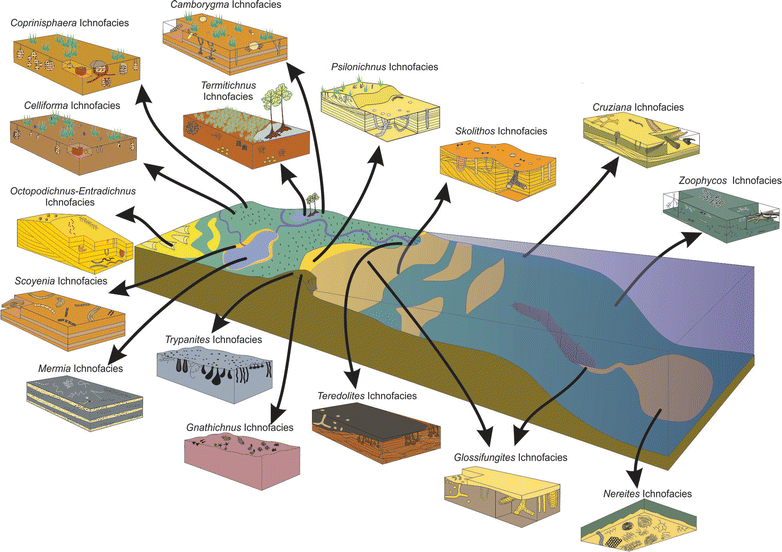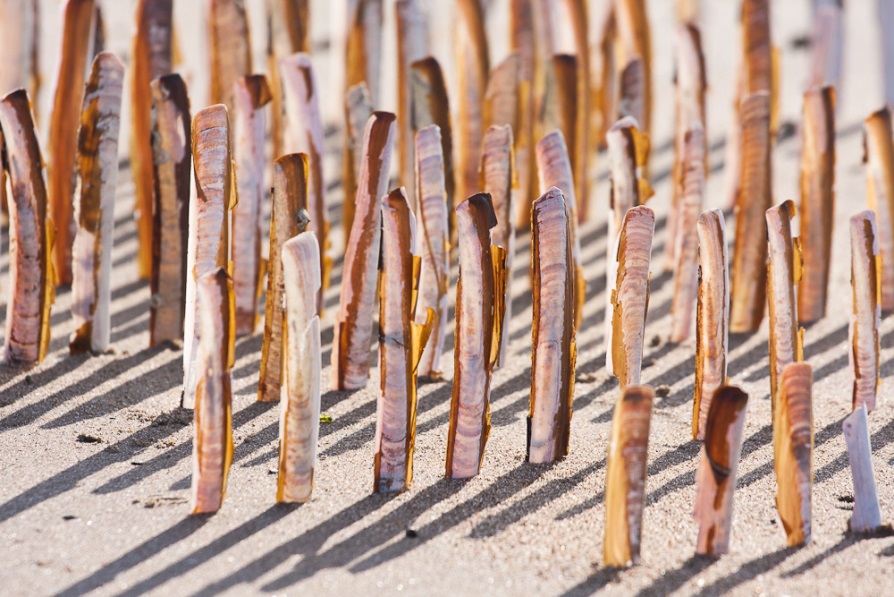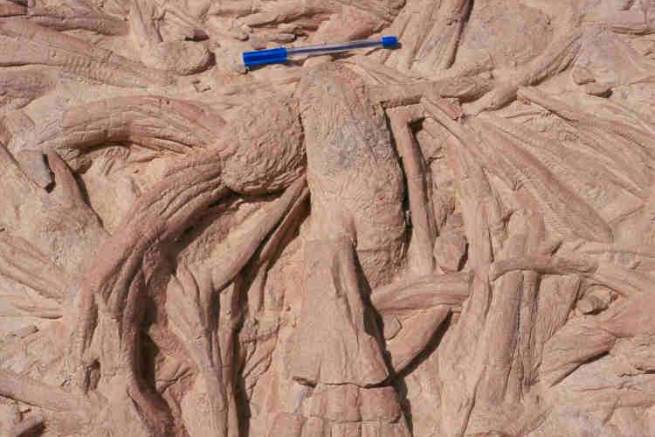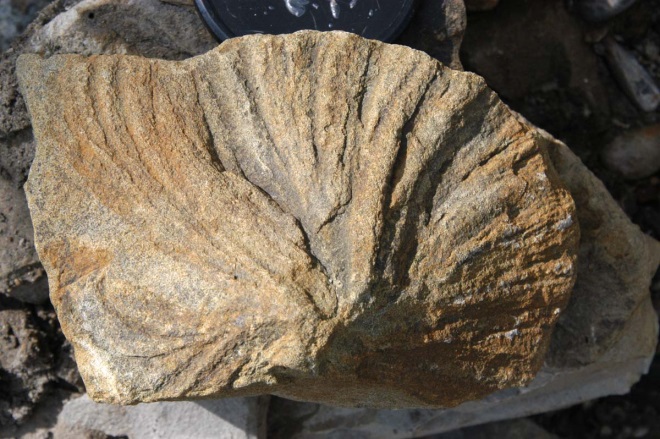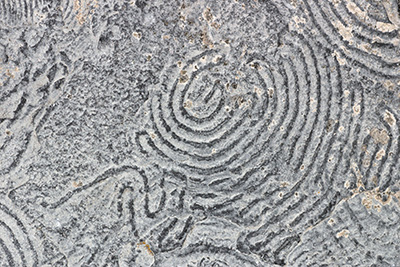Use the "Ask" button to propose and topics to cover during the question and answer session. Give questions you'd like covered the "thumbs up".
Ichnology
Fossil organisms are not the only tool at the palaeoecologist’s disposal. Trace fossils provide evidence of animal behaviour in the sedimentary record. The strengths and weaknesses of ichnological traces complement those of conventional fossils.
Trace fossils, broadly, are evidence of biological activity preserved in the sedimentary record. Trace fossils include footprints, trackways, burrows, borings, and other structures, whether preserved in soft sediment or as impressions on shells or skeletal elements. Bioimmuration is further, particularly gruesome, category.
Unlike shelly fossils, trace fossils in a sedimentary substrate (sand, mud) cannot be transported, and thus unequivocally reflect the environment at the place of deposition (though not necessarily at a single point in time). Because traces can be made by taxa with or without biomineralizing ‘hard parts’, the trace fossil record is affected by a very different set of preservational biases than the conventional fossil record.
Define what a trace fossil is
Understand the link between trace fossils and living organisms
Infer environmental conditions from trace fossil assemblages
